How will David Hallberg remake Swan Lake for the Australia Ballet?
The Australian Ballet is spending millions on bringing the 150-year-old classic, a relic of Tsarist Russia, into the modern age.
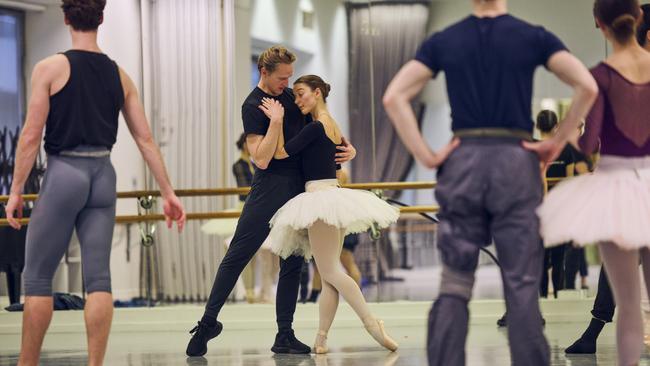
It is 11am on a wintry Melbourne morning when I make my advance on the great Southbank fortress of Australian dance. Not only to interrogate the Australian Ballet’s artistic director David Hallberg over his plans to stage a Swan Lake of positively sumptuous traditionalism with the backing, by way of big bucks (millions of them) from pillars of our philanthropic community, but to watch the forces combining to re-energise the 150-year-old classic ahead of its premiere next month.
Over the course of this day I will sit in on barre work, admire sets created by 3D printers warehoused in a huge hangar, and talk to dancers, conductors and costumiers working at the peak of their powers for our top arts company at the dawn of its seventh decade. And I will watch spellbound at the palpable magic and great mystery of Hallberg rehearsing his corps de ballet with endless patience and style and quietness.
How exactly will he breathe new life into the most famous ballet of all time – the fairytale of a girl transformed into a swan by an evil wizard, who can only be freed by true love’s kiss? What does it mean to stage this relic of Tsarist Russia today? All that will come. First, it’s into the Zambelli Family Studio to sit in on a slice of the morning barre class. Says Anthea, public relations manager for the Ballet, masked for a cold in a delicate week when the company is about to travel to London for a tour: “It’s a very special time of day for the dancers. It’s their meditative moment.” They collect their thoughts and find the rhythm of their own intentions (destinies wouldn’t seem too strong a word for the dreamlike sense of dedication these dancers exhibit). The poet WB Yeats asked, How can we know the dancer from the dance? Well, how indeed.
A tall slender figure slips in to observe. It’s a glimpse of Hallberg, the 41-year-old American who became artistic director of the Ballet in 2021. He is dressed casually in a sweater and slim-fit check pants, but everything about his demeanour underlines the fact that he is lord of what he surveys.
Sharni Spencer, the Newcastle dancer promoted to principal just last year, is practising in what seems a deliberate yet effortless reverie. Overseeing proceedings like a ringmaster is the Ballet’s principal coach, Fiona Tonkin; the famed lioness of the corps is dressed entirely in black, as if any hint of imprecision, any deviation from the devotion of the dance will be someone else’s funeral. Her hair is pulled back, she strides from one end of the studio to the other, and the tone she sets is characteristic of the Australian Ballet: an absolute commitment to the seriousness of every step, every twirl, every attempt to realise the ideal of complete control of a human-body-as-artistic-vessel.
The barre work ends and the dancers move to the centre of the studio. The pianist begins to play Dream a Little Dream and the understatement of the tinkling melody seems appropriate to the occasion, casual and rapt at once.
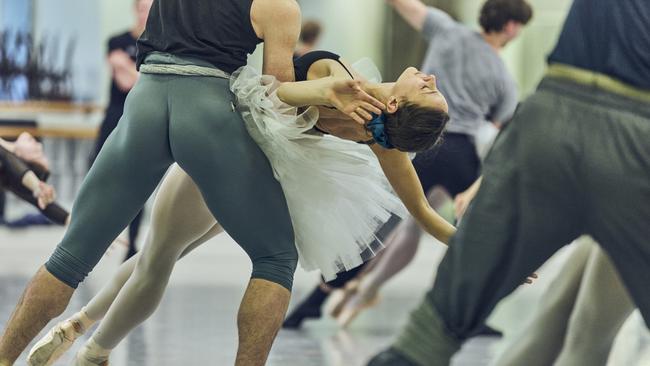
Next I am whisked down a white circular staircase with terrazzo treads and a curving, ribbon-like balustrade. The colour of the marble has been designed to evoke the silk of the pointe shoes. These are on show in a circular, glassed-in treasure house – the pointe shoe storage room – where each compartment houses the shoes for a single dancer. The soft pink hue of it all seems at odds with the rigour of the craft. In Swan Lake, the lead dancer playing the dual roles of Odette the white swan and Odile the black will wear through two pairs a night. Somehow nothing underlines the centrality of the dance like this endless need for shoes.
Past the wardrobes and the rehab rooms, with reformers, ice baths and physiotherapy suite. There is a fully equipped gym and a doctor’s office. It’s all very state-of-the-art, but with the deep aroma of history. Beside the Van Praagh Studio – named for the Ballet’s founding director, who chose to launch the company with a production of Swan Lake – is a portrait of Noel Pelly, who worked as an administrator for the company for more than 30 years and was described by Rudolf Nureyev as “the heart and soul of the Australian Ballet”.
The floor directly beneath the studios ishome to the costume workshop. Here we start to peel back the curtain on Hallberg’s Swan Lake. Musette Molyneaux, head of costume wardrobe, and Jenny Howard, production co-ordinator, inhabit a different world again. In the fabric room, the walls are lined with boxes labelled Felt, Wool, Silks and Fur/Astrakhan. Jenny laughs and says, “Yes, we’re Hoarders Anonymous down here.”
It’s all a hive of activity – costume makers sit at various workstations fashioning bodices, skirts and jackets. The energy of the dress people buzzes along in overt contrast to the dancers but also complementary to them. Jenny darts off to fetch an old costume bible for a previous production of Swan Lake while Musette takes us through some of the preliminary costume sketches, designed by Mara Blumenfeld. They are in turn lavish, distinctive and grand. The subject of cost comes up and Jenny laughs. “We just spend money in this department,” she says.
The costume bible arrives, and it’s a huge, compendious tome – a reference work that documents with religious thoroughness the fabric used for every costume. We proceed to the main atelier, which is lined with rack after rack of costumes. Musette glows. “We had a costume parade last week and these came up beautifully under the lights.” And then she adds: “Though you can see that here, for instance” – she is showing us the costume for a Hungarian Lady – “there’s a lot of finishing to do.” The next rack is labelled Maidens. “They’re what we used to call peasants,” says Musette, all smiles as she brings out a finished swan tutu with manifest pride.
Hallberg’s vision, Musette confirms, was for unfussy costumes that frame the body and create beautiful silhouettes. Gone are the layers of feathers and markings, so as “not to overcome” the shape of the body, she says. It is a minimal, very clean design, although satin ribbon and clear sequins embroidered into handmade lace will make 40 white swans appear incandescent under lights. The black swan is similarly pared-back, with jet jewels evocative of a Victorian mourning costume and a crown that will also shimmer on stage. The most striking costume here in the workshop is for Baron von Rothbart, the great villain of the piece, which is dark and menacing with a ravishing plumage of rooster feathers at the collar, the colours of an oil slick. And yet even this costume adheres to the production’s pervasive theme of pared-back elegance.
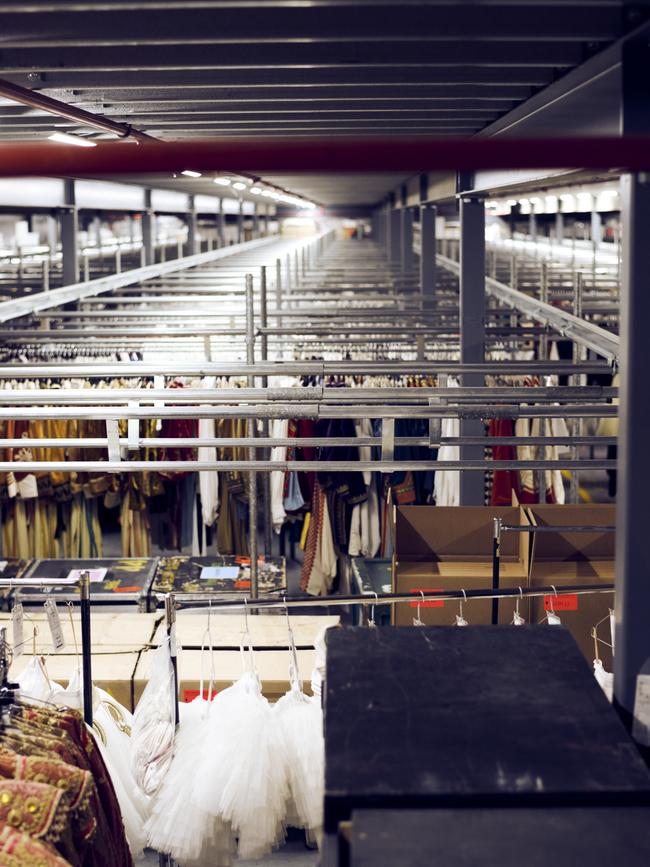
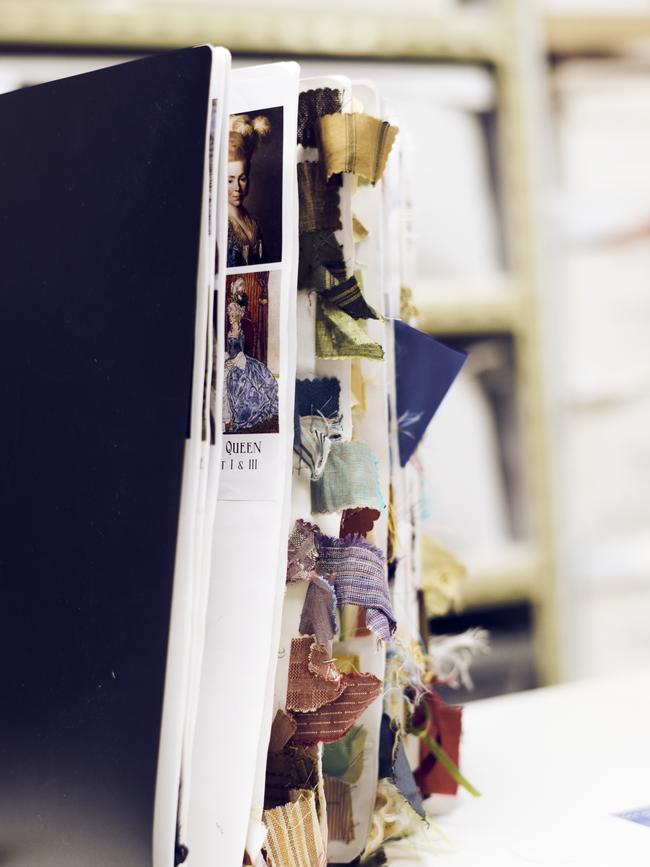
Which brings us to Hallberg’s artful, airy office with its windows looking out over the Arts Centre spire. On his desk is a stack of DVDs with footage of Nureyev in Swan Lake, The Nutcracker and Don Quixote. Nureyev famously filmed his Don with Robert Helpmann and the Australian Ballet in an airport hangar in Essendon back in 1973. I note that Hallberg revived it earlier this year, adapting it to the stage. “Well,” he says in his cool, crisp, concentrated manner. “It was a great game-changer for the company here that Nureyev gave the company his attention in that way.” It’s as if Hallberg sees himself as the past, present and future of the Australian Ballet, and why wouldn’t he? This is a man, born in South Dakota, who was the first American principal at the Bolshoi Ballet. He danced with the Mariinsky, the Paris Opera Ballet and the Royal Ballet at Covent Garden. He danced with everyone, including Natalia Osipova and Misty Copeland. He was a regnant star, and then his ankle went.
I ask him if it was as if an abyss had opened. “It wasn’t like that,” he says. “Not one dramatic moment. It happened gradually over the course of time. It only got excruciating at the end. It started almost as an itch. I’d come off stage and I’d shake my foot to try to relieve the pain or whatever.” Eventually he realised it was a serious problem that had to be looked after. It would drive him off the stage – a tragedy, after the soaring success he had achieved.
There’s a very powerful reserve about this man, who grew up as a boy idolising Fred Astaire. What’s the phrase in Yeats? The fascination of what’s difficult. He admitted as much when he was once asked about why he read the Norwegian master Karl Ove Knausgaard. Something in him likes things to be difficult.
There were the performances of Nederlands Dans Theatre’s Kunstkamer he staged for the Ballet last year, the absolute essence of modern dance which has been described as “fiendishly complex”. Now, with the stupendous financial backing, I ask him: is there pressure to serve up a chocolate box Swan Lake?
“Yes and no,” he says, absolutely alert to the tightrope he is walking. You can be traditional without being twee. Magic but not cartoon “I can understand the sense that it would be like a chocolate box sort of traditional Swan Lake, but that is something I’ll adamantly be avoiding.”
This man plainly wants a spectacular, opulent Swan, but he’s here to tell you that this crowd-pleaser of a production – a homage to the famous ’70s Swan Lake created by then artistic director Anne Woolliams – is going to be a vision of truth as well. You can hear the iron in his voice. “I don’t want it to look like a museum piece,” he says, and there’s something mesmerising about his conviction which the quietness of his manner does nothing to dispel.
“It needs to have realism and life and energy in its portrayal, so that’s what I’ll be working with the dancers on.”
And he’s damned if he’s going to settle for some visual dreamscape, either. No misty scenes across the lake here. “It’s not going to be this painted set with painted castles in the background, a sort of smoke and mirrors Disney fairytale kind of thing.” He references gardens that look like gardens and “the very realistic exterior” of the palace.
“I saw the shell in the warehouse a couple of weeks ago and it looks amazing … full windows and stairs going into the palace.” There’s something intoxicating about the pulled-back passion of this man from the prairies. And then he reiterates: “Not like a Disney movie. And that’s the risk of Swan Lake – of Nutcracker and of Sleeping Beauty and you know, all the great classics.” I push at this. What about all the blokes who gulp when their wives and girlfriends drag them to the ballet because they know they’re going to get this absolute apotheosis of Russian 19th-century romanticism? Doesn’t he feel this ambivalence?
“I don’t feel an ambivalence,” Hallberg says, and confesses how he once sniffed at Swan Lake but was shaken out of it.
“In my mid twenties I was dancing a lot of Swan Lakes and there was an ambivalence to it at that stage of my dancing career … it’s like when teenagers smoke cigarettes because they think it’s cool. I thought that not liking Swan Lake was cool. I thought I wanted to do Pina Bausch, I wanted to do the Nederlands Dance Theatre repertoire, I wanted to do something like Kunstkamer. And I was actually schooled by a very renowned contemporary choreographer in New York who one day asked me what I was dancing for our season in New York. And I said, ‘Oh, just another Swan Lake’ and he said, ‘Don’t dumb down your art form, don’t ever diminish the power of Swan Lake.’” Hallberg gasped.

“So now, 15 years later, I’m not dancing Swan Lake any more. I’m directing Swan Lake and bringing it to this company.”
And then he starts to soar. “There’s such beauty in Swan Lake. The score by itself – there’s such storytelling in there. There’s the search of a melancholic prince who doesn’t fit in. There is the theme of the Swan, who is trapped by someone else. There is a yearning for truth. At the end there’s the euphoria of the apotheosis. And then there’s the choreography, which is the most iconic choreography ever created for classical ballet.
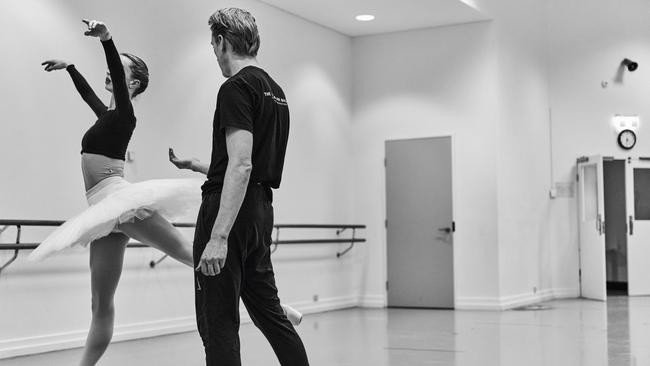
“There’s a reason why it has such stature and such timelessness. There’s no questioning its validity for me, and there’s not really a question of its validity for audiences. They flock to Swan Lake.” As if abashed by the pun, he comes out of the trance. He says in a modest, expressionless tone: “That was totally unintentional, by the way.” Then the intensity comes back. He knows that the Russians, for all the grandeur of their corps de ballet, can be “dusty”. “That’s the problem I am avoiding,” he says. But he also adds: “You don’t have to reinvent the wheel with Swan Lake.” The blueprint starts to be revealed: “People tend to not mess with Act Two too much. Or the Black Swan pas de deux in Act Three. And there’s a reason why – it’s so well done.” So his Black Swan will attempt the famed and feared 32 fouette spins? “Absolutely”.
The key to the Hallberg reimaging of Swan Lake for the Australian Ballet is less in the steps, and more in the drama and storytelling. Costumes and set design will support the revelation in the depth of character. “I’ll be sharpening the action on the stage, the dramaturgy, how the story is explained and unfolds,” he explains. “The way we tell stories is more realistic nowadays – there isn’t much pantomime and theatrical gesture.”
“Realism” – there’s that word again – “is found in the love between Odette and Siegfried,” he adds wryly, “regardless of the fact that she’s a bird”.
What of performing the ballets of Tsarist Russia, amid a general revulsion toward imperialism and the horror of the war in Ukraine? “I don’t think there’s an issue,” he says, clearly meaning aesthetically. “History is history.” He adds: “You can’t turn a blind eye to what’s happening but George Balanchine is now being discussed because of how he led his life with ballerinas in the company. But does that mean we should stop performing Jewels?” He says “we learn through time” but is clearly appalled by the idea of any black-listing that obscures the apprehension of art. The conversation shifts to Liam Scarlett, the choreographer of a recent Swan Lake at Covent Garden, who took his own life after allegations of sexual misconduct from male dancers. “Yes,” he says, “that’s an extreme example. Horrible.”
The Australian Ballet performed Anne Woolliams’ Swan Lake for 25 years. He wants this production to last for decades.
-
“Every major company needs a Swan Lake that will stand the test of time … for things to last you have to approach it in a way to transcend the theatrical fashion of the times. Nothing too gimmicky.”
-
That’s not to say he’s unappreciative of different takes on Swan Lake. Matthew Bourne’s all boys version, for instance, or Darren Aronofsky’s film Black Swan with Natalie Portman. “It was a great horror movie, much like Aronofsky’s other films are.” He was in New York at the time and remembers it well. “Darren and I spoke a bit and Natalie was around. And she worked with the right people to learn to dance. But I mean,” he adds, “we’re not going to be pulling feathers out of our arms.”
It’s an easy get, but Matthew Bourne makes it an obvious question: is he a Billy Elliot figure? He laughs. “Probably.” He’s exercised by this. “Billy Elliot fought back. I didn’t fight back. I was teased, I was called every name in the book. I was really bullied at school but dance was my refuge. It was my calling. So, yes, Billy Elliot in that way because I grew up in suburban America and that was really an ugly duckling kind of thing.”
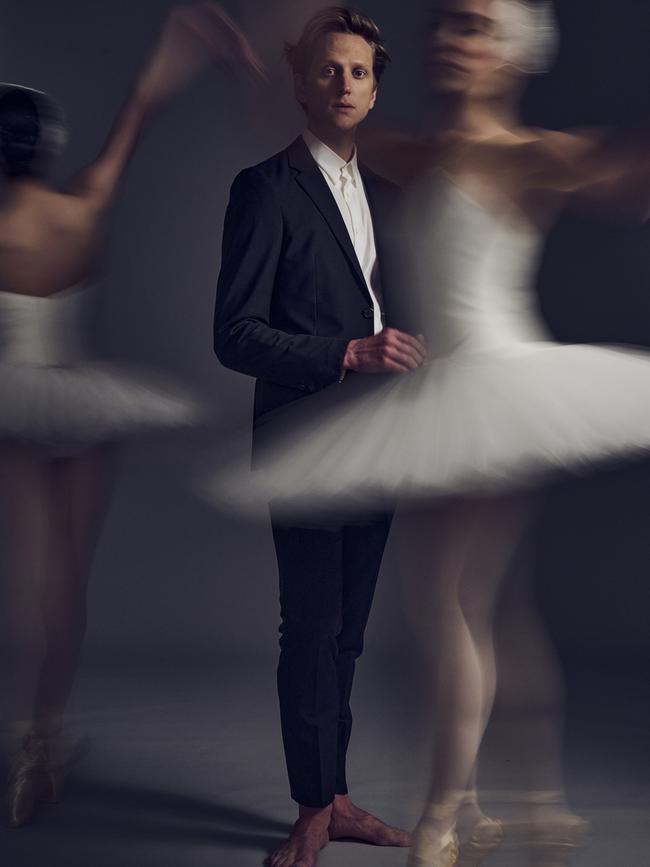

The story of how Hallberg recovered from his injury in Melbourne with the support of physiotherapist extraordinaire Sue Mayes of the Australian Ballet is a legend in dance circles. Patched up, Hallberg returned to the stage – he was rehearsing Siegfried for the Royal Ballet’s Swan Lake, of all things, when Covid closures befell the arts world – only to accept David McAllister’s invitation to become his successor as the Australian Ballet’s artistic director, and lead the company at the zenith of the pandemic. “When I came and started as director Melbourne was a ghost town. We cancelled. We did 60 or 70 of a planned 170 shows. You couldn’t think twice. You had to react.”
He used the calamity to the company’s advantage. “Yes, it was a baptism by fire, but I certainly learned crisis management. And I became a good motivational speaker to the company. I had to keep them going.” It was also “very oddly a nurturing time as well for me and the dancers. Because we had no performances to prepare for we sank our teeth into developing the technique, in working with the dancers in the studio.”
Does he feel at home in Melbourne? “Yeah, I love Melbourne.”
Despite the rocky start, “I never doubted being here,” he says. Still, it’s true that when he left New York he left “20 years of friendships”. Has he made new friends? “I have two,” he says, and smiles. He is in a relationship with “a man who lives in Sydney, so it’s a long distance kind of relationship unfortunately”.
So how long does he envision staying in Australia? “Well,” he says, “I’m not going to be specific in my answer but this isn’t a stop to somewhere else. The company needs someone to settle in. I’m really happy here. Happy with my bike ride and my local coffee place and the company I’m shaping. I don’t know if Australia will be my home for decades or if it will be my home for a number of years.
“Australian ballet came into my life quite naturally; Australian ballet and Australia let me heal with my long injury and rehab I had with them. So things just sort of unfolded. And I think moving forward I’ll just trust the process.”
The conversation shifts to ballet’s great autocrats, including Maina Gielgud, a distinguished but sometimes imperious woman who took one look at David McAllister and said, “Maybe a nose job?” (Though she also suggested, much later, that he could run the company.)
Does David Hallberg ever say, “This isn’t f. king good enough?”
“I don’t drop the F-bomb in rehearsals,” he says, “but I expect a standard from myself and I expect a standard from the organisation. When it’s not what I want it to be, I’m voicing that.” He also adds that he praises the company, that he tears up at what they achieve.
I ask whether his work involves as much of a commitment to modern dance as it does to classical ballet. “No, no,” he says. “Our roots and structure are in classical ballet.” Then he tells the story of some old traditionalist writing to him, apropos of Kunstkamer: “How dare you bring this twitching, gyrating on stage?”
It’s a fine line but you trust David Hallberg’s sense of the different worlds he negotiates.
We’re out to visit more of these worlds. To the southwestern suburb Altona, and a vast warehouse – the production centre where Hallberg’s sense of an unDisneyfied but opulent Swan Lake can transpire. Peter Herbert, technical project manager – another of those concentrated professional voices that are to be found everywhere in the Australian Ballet – promises the “surreal” of the swan lake along with Hallberg’s realistic palace and gardens. Then it’s back to the Ballet HQ at Southbank to talk to Jonathan Lo, the music director and chief conductor. Making Swan Lake seem fresh is like making Beethoven seem fresh, he says. He emphasises that Swan Lake was Tchaikovsky’s first ballet, and notes how he brought the drama: “He didn’t really know the ballet idiom. The score is incredibly symphonic. So he conceived of character and drama symphonically.”
And finally, to rehearsal. Magic and the earthiness at work. Hallberg seems to trace in the air the formation he wants his dancers to emulate. There is a physical, uncanny sense of the mastery of a mystery. A common endeavour rooted in devotion as they rehearse the famous Act 2 pas de deux, plunging into arabesque, taking flight in the jumps, arms aloft in the inimitable Swan port de bras.
Hallberg will wait until the last moment to confirm his stars for opening night, but principals Benedicte Bemet and Joe Caley are among the duos who will inhabit the roles of Odette/Odile and Siegfried for a run of performances. We speak to the pair and it’s weird — in the wake of the impassioned sense of ceremony in rehearsal — to listen to the chatty ballet couple.
Queenslander Bemet, who did Balanchine’s Jewels at the Royal Ballet Covent Garden a couple of weeks ago, purrs and laughs and mocks. Caley comes from Hull, Philip Larkin country, and speaks with an easygoing candour. Bene, as she is known, has done Swan Lake before – many times – but has not danced Odette/Odile. I ask her whether she’s more of an Odile or an Odette in real life and she smiles away the distinction. Of course she’s good. She laughs.
-
“I don’t often get to do the evil, sexier characters,” she says. “But that’s fun.”
-
Does the character acting pose a greater challenge? “You have to put a lot into it,” concedes Joe, although here and now, in the studio “while we’re at the beginning stages of putting this together, we don’t have to be so serious.” Joe says he’d always meant to come to Australia for his wife’s sake; he and retired dancer Jenna Roberts have a daughter. Bene becomes animated. “Let me find you this picture,” she says, scrolling through her phone. “It’s the cutest picture ever.” Joe smiles benignly.
That great New York critic Susan Sontag used to think that ballet was the highest form of performative expression because the body was so totally engaged. It’s funny – sacrilegious in a sense – to see ballet dancers hanging loose.
You don’t need any oracular knowledge to realise you’re in the presence of something with Nureyev or David Hallberg or any of the aspirants to the high art of ballet. If we had a flagship national theatre to galvanise our state companies, would it attract a talent that means to drama what Hallberg means to ballet?
You could mistake Hallberg for a cult figure if he wasn’t so palpably down to earth and shrewd and sane – on my whirlwind tour of the Ballet it’s clear that he commands the support of people who are worldly and expert and alert in a way that is rare in our artistic companies.
Like the tennis, like Aussie rules footy, like the ghost of Barry Humphries and the intelligence of Germaine Greer, this institution makes Melbourne seem like one of the great cities of the Earth.
And with Swan Lake, the sponsors know before the curtain opens that they’re putting their money on the right horse. This opulent crowd-pleaser, this most fathomless and seductive of ballets, is a show that captivates the soul. Good girls, bad girls, the flutter of wings, the thrilling steeplechase of the heart and its dark places. What more could you want?





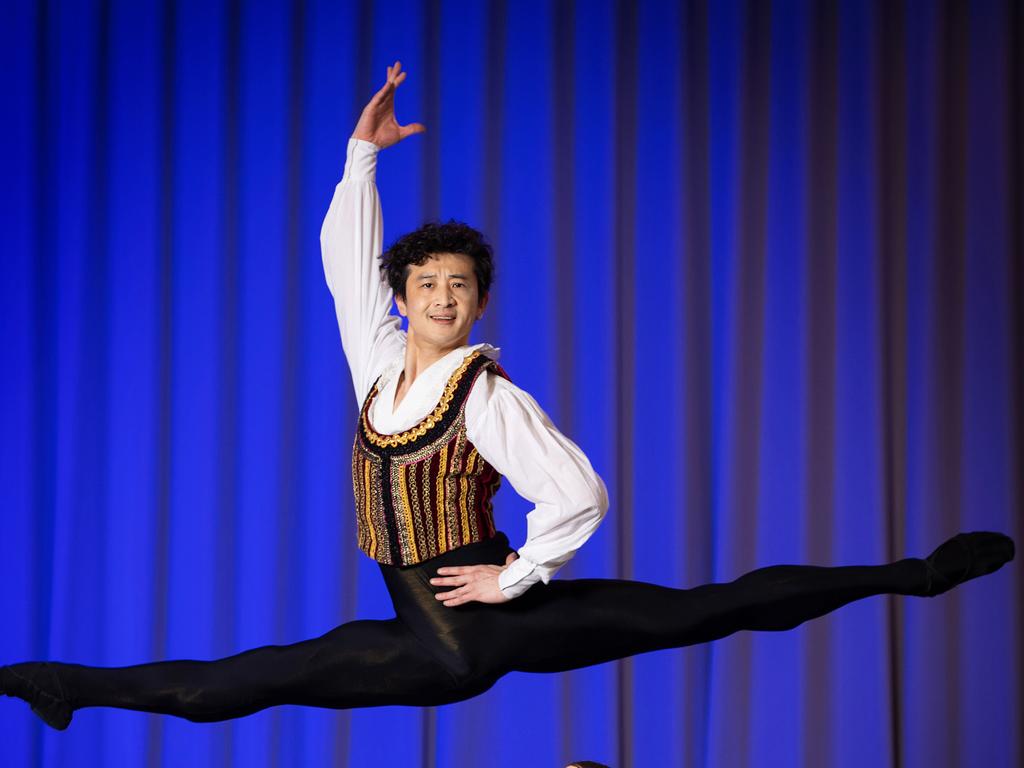
To join the conversation, please log in. Don't have an account? Register
Join the conversation, you are commenting as Logout